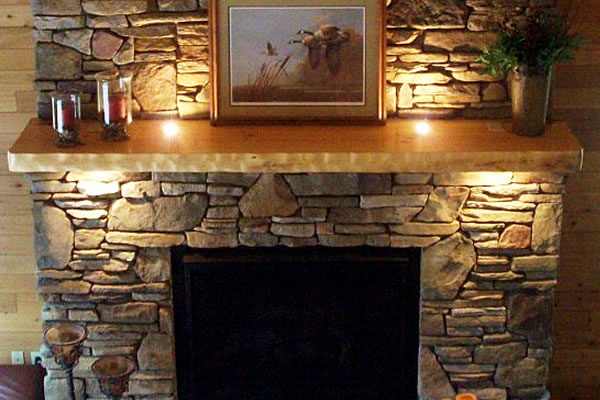If you have a fireplace that you aren’t using, you are probably paying more for energy than you should be. A fireplace provides far more than just a calming visual effect; it also offers comfortable warmth that radiates into even the largest rooms. Here are a few ways in which a fireplace can reduce your energy bills while keeping you toasty and warm.
Using a Fireplace for Supplemental Heat
It’s important to keep in mind that a fireplace cannot replace an HVAC system in most homes. It is simply not designed to do so. You can heat a large room with a fireplace and ceiling fans, and if you install ventilation between levels, you can even heat one or more rooms above. However, a fireplace does not attach to a blower system, which would in turn deliver heat generated by the wood fire to every room in your home. For that, you will still need to rely on your HVAC system, and this means that your fireplace is meant only to provide supplemental heat.
Wood is Cheaper than Electric, Gas, or Oil Heat
Though the price of a cord of wood varies a great deal, for almost everyone in the country, it is cheaper to heat with wood than with electricity, gas, or oil alone. A small home may go through one cord of wood through an entire winter; in a larger home with more than one fireplace, up to three cords of wood may be required. Either way, with a price ranging from $80 to $150 or so depending on where you live, it’s much cheaper to supplement your HVAC system with wood than rely on it for all your heat.
Tips for Using Your Fireplace as Efficiently as Possible
Of course, if you’re going to save money on your energy costs by using your fireplace, it’s important that you use it correctly. There are a few different ways in which you can do this, and even the US Department of Energy promotes them.
- Follow through with cleanings and maintenance. A clean and well-maintained fireplace and chimney is far safer and more efficient. You should schedule this annually or every 36 fires – whichever comes first.
- Check your damper regularly. Making sure that your damper opens and closes completely (and seals tightly when closed) can also drastically improve the efficiency of your fireplace.
- Burn Only Seasoned Wood – Some wood is more expensive than other types, but this is for good reason. You must be certain that you only burn wood that has been properly seasoned (dried). Hardwoods are among the most expensive per cord, but they burn hotter and longer, making them the ideal choice.
- Insulate Your Chimney – Finally, by making sure your chimney is well-insulated, you will be able to keep more of your heated air inside your home where it belongs, allowing you to get more bang for your firewood buck.
A fireplace can have a huge impact on your wintertime energy bills, and this is especially true if you live in a smaller home with an open concept design that allows for better circulation of the heated air. Follow the tips above to improve your fireplace efficiency, but remember that in most cases, you should use your fireplace to supplement your HVAC system rather than replace it.





